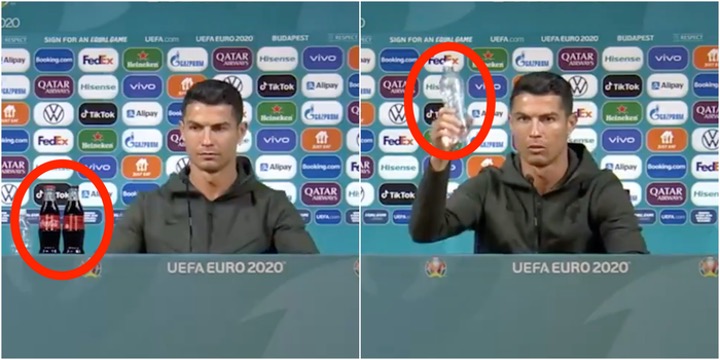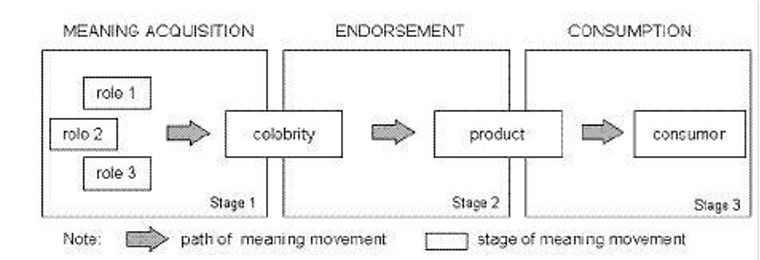“Swifteconomics“, a whole term coined to describe the dynamic economic boost generated by Taylor Swift’s Era’s tours indicates that many are already aware of the significant impact Swift’s concerts have had, putting everyone on the edges of their seats. Or remember when Christiano Ronaldo removed two Coca-Cola bottles from view and asked for water instead at a Euro 2020 news conference which coincided with a $4 billion drop in the market value of the American drink giant?
Now just imagine these celebrities endorsing a product. The sheer insanity of the effect on consumers when their favourite celebrities endorse a product is undeniable. These influential figures have the power to shape trends, influence purchasing decisions, and elevate a product’s perceived value. Celebrity endorsements not only boost the endorsed product but create a cascading impact across related industries. From increased sales and brand visibility to the surge in social media engagement, the effect extends far beyond just the collaboration.
Celebrity endorsements, widely acknowledged as a “ubiquitous feature of modern-day marketing”, have been a longstanding and immensely popular advertising strategy. Advertisers consistently leverage the influence of celebrities to elevate the audience’s attentiveness, infuse glamour and desirability into their products, and imprint a lasting impression on consumers. This strategic use of celebrities not only aims to enhance memorability but also bolsters the credibility of the advertisement. Previous research suggests that as many as 25% of all television commercials and 10% of advertising budgets involve celebrity endorsements.

How it works
Stage 1
Let’s understand this from the “meaning transfer model” given by McCracken. The model comprises three stages, and the impact of the celebrity endorser extends across all these stages. In the initial stage, celebrities provide unique lifestyle meanings and diverse personalities that regular folks might not offer. Moving to the second stage, companies need to carefully select the right celebrity endorser for their specific product. Additionally, they must design an advertising campaign with the objective of transferring the meanings and personality of the celebrity to the product. The third stage is when the meanings and personality associated with the product are passed on to the consumer who has purchased the endorsed product.
McCracken suggests that endorsements grant advertisements access to individuals from culturally established worlds, with endorsers carrying specific and potent meanings. Celebrities, in particular, can convey deeper, more competent, and distinctive meanings compared to non-celebrity endorsers. However, McCracken notes that non-celebrities also contribute to meaning transfer in ads and can be more cost-effective.
The choice of celebrities as endorsers and their added value to the process lie in what they bring to the table. Non-celebrities convey information such as age, gender, and condition, whereas celebrities provide more precise details, including personality and lifestyle meanings. Celebrities offer a unique composition of meaning that cannot be replicated.
Celebrities prove to be more effective media than non-celebrities, as they can effortlessly embody and convey meanings from their personalities with simplicity and distinctness. Unlike non-celebrities who merely act out meanings, celebrities own them, having developed and showcased them through repeated performances in various public domains like movies, TV series, athletics, and other careers.
McCracken emphasizes that celebrities associated strongly with a particular role are the most effective endorsers. Without this strong association, endorsers may struggle to bring clear and unambiguous meanings to the products they endorse. In essence, the meanings conveyed through celebrity endorsements originate from their diverse experiences and roles, creating a unique and influential impact on the advertising process.

Stage 2:
The process of selecting an ideal celebrity endorser revolves around aligning their represented meanings with a meticulously crafted marketing plan. The company’s initial step is to identify the symbolic properties desired by consumers for the product. Following this, a thorough examination of available celebrities takes place, considering both the meanings they bring and any budget constraints. Once this evaluation is complete, the company can make a strategic choice, selecting the celebrity endorser whose meanings best resonate with their product.
After the celebrity is chosen, the advertising campaign takes center stage, focusing on pinpointing and transferring the desired meanings to the product. It is imperative for the campaign to capture all the positive meanings from the celebrity while excluding irrelevant and undesirable ones. Achieving this requires incorporating people, objects, and contexts in the ad that are not only relevant but also share the same meaningful associations as the celebrity. Occasionally, ads may experiment by introducing celebrities to new roles, injecting fresh meaning into their personality, though generally, the emphasis remains on the seamless transfer of meanings rather than a transformation of the celebrity. McCraken underscores the importance of arranging the ad to emphasize significant similarities between the celebrity endorser and the product, allowing consumers to take the final step in the meaning transfer process. Rigorous copy testing becomes the litmus test to gauge the ad’s success in achieving this objective. Once confirmed, the second stage is concluded, and the ad is presented to the consumer. At this juncture, consumers recognize the inherent similarity between the product and the celebrity endorser, accepting that the meanings associated with the celebrity seamlessly merge with the product.
Stage 3:
The third and final stage of the meaning transfer process is intricate and sometimes challenging. Merely owning a product does not automatically convey its meaning to the consumer; there is no automatic transfer or transformation. Consumers must actively claim, work with, and integrate the meanings through a process of experimentation, choosing and incorporating them into their lives.
Celebrities act as “super consumers” in aiding the final stage of meaning transfer. They are admired for creating clear, meaningful, and powerful selves, serving as examples of self-creation. When celebrities engage in endorsement, they provide consumers not only with an exemplar of self-creation but also with the essential building blocks to achieve it. In essence, celebrities offer both inspiration for self-development and the tangible elements needed for consumers to construct their own meaningful selves.

Reliability of Celebrity Endorsements
Celebrity endorsements can be a double-edged sword when it comes to reliability. Previous research has shown that using celebrities in advertisements can directly improve the company’s profits. Marketers utilize celebrity endorsements to make advertisements more believable and enhance consumer recognition of the brand name. This strategy helps companies establish a unique position in the marketplace and influence a positive brand image and consumer buying intention. According to a report, 28% share of the ads’ telecast on TV was endorsed by celebrities in January-June 2023. Film stars contributed more than 80% of advertising during January-June 2023, followed by sports personalities and television stars, who contribute 11% and 6%, respectively. Celebrity endorsements witnessed a 21% growth in share during Jan-Jun’22, and an 11% growth in share during the same period in 2023, compared to January-June 2021.
Moreover, it is often speculated that celebrities overshadow the brand image but in a recent study conducted by Wharton experts this notion has been proven to be false with the study concluding that celebrity endorsements can be effective in influencing consumer decision-making. The research suggests that celebrities can build consumer confidence and sway preferences, particularly with products that individuals do not have strong feelings about. This persuasive power of celebrities is believed to be rooted in evolutionary and biological factors, as humans and primates tend to follow the lead of high-status individuals in their group.
However, it is important to note the downsides of it too. Like the attitudes towards a celebrity can transfer to the endorsed brand, negative information about the celebrity can also reflect on the brand. Negative publicity involving a celebrity can have a detrimental effect on the brand and how it is perceived.
A famous example of that would be the Tiger Woods scandal, in which, according to Christopher R. Knittel of MIT and Victor Stango of UC Davis, the market value of companies that had Tiger Woods as an endorser significantly declined after the 2009 scandal involving his personal life. Within 10 to 15 trading days after the scandal broke out, the sponsors’ overall market value dropped by more than 2%, with Electronic Arts, Nike, and PepsiCo. experiencing the largest losses. Additionally, competing firms with a higher number of celebrity endorsers performed worse in terms of stock-market returns, indicating that the scandal had a negative impact on the perceived risk associated with any endorsement. Or a recent incident to note would be Adidas ending their partnership with Kanye west, after the rapper got suspended from Instagram and Twitter (now X) over offensive posts.
Conclusion
To sum up, the impact of celebrity endorsements in marketing is undeniably significant, with the allure of star power having a profound influence on consumer behaviour and brand perception. This influence is evident in various aspects, ranging from the economic boost generated by celebrity-led events to substantial market fluctuations.
However, amid these benefits, the reliability of celebrity endorsements is a critical consideration. While research supports their effectiveness in boosting profits and influencing consumer decisions, caution is necessary due to potential risks. Negative publicity around a celebrity can cast shadows on endorsed brands, as seen in the Tiger Woods scandal and the recent Adidas-Kanye West partnership termination.
As businesses navigate the celebrity endorsement landscape, they must carefully weigh advantages against potential drawbacks. Key factors such as brand alignment, ongoing celebrity reputation, and the ability to manage controversies effectively are pivotal. Despite challenges, the persuasive impact of celebrities in shaping consumer preferences and instilling confidence remains a potent force in contemporary marketing. Strategic decisions and vigilant risk management will be essential as companies continue to leverage the allure of celebrity endorsements.
Written by – Vaishnavi Sahu
Edited by – Anushka Bhutani
